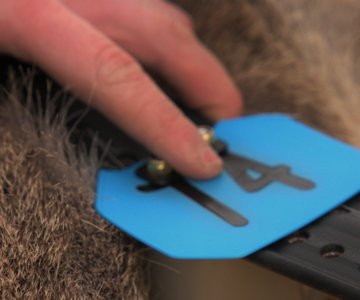The Wyoming Range holds breathtaking landscapes, abundant wildlife, lush wildflowers, and ample recreation opportunities. It is also home to a mule deer herd that is prized in Wyoming and beyond. Ensuring that the Wyoming Range mule deer herd is robust, and that it remains so for generations to come, requires a solid understanding of the factors that make this special herd tick.
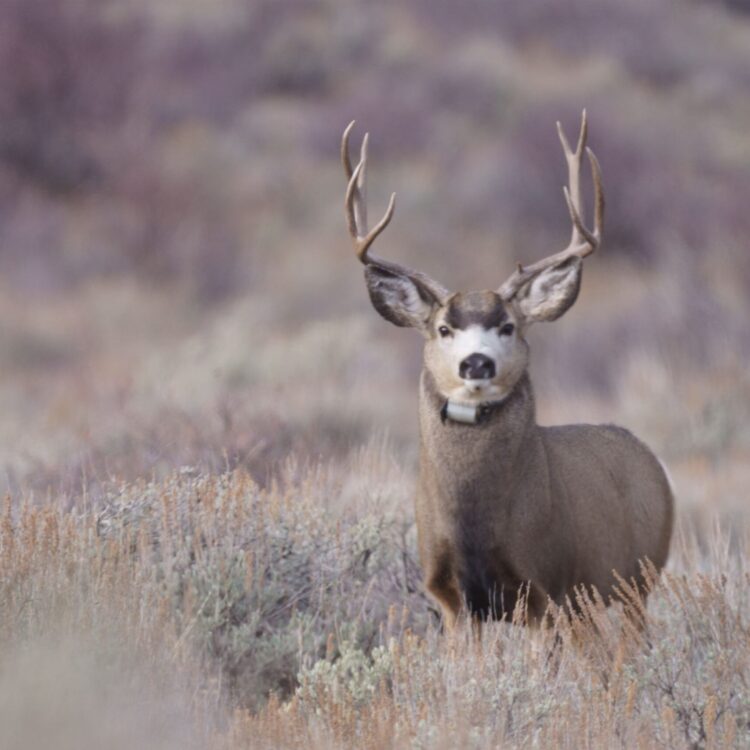
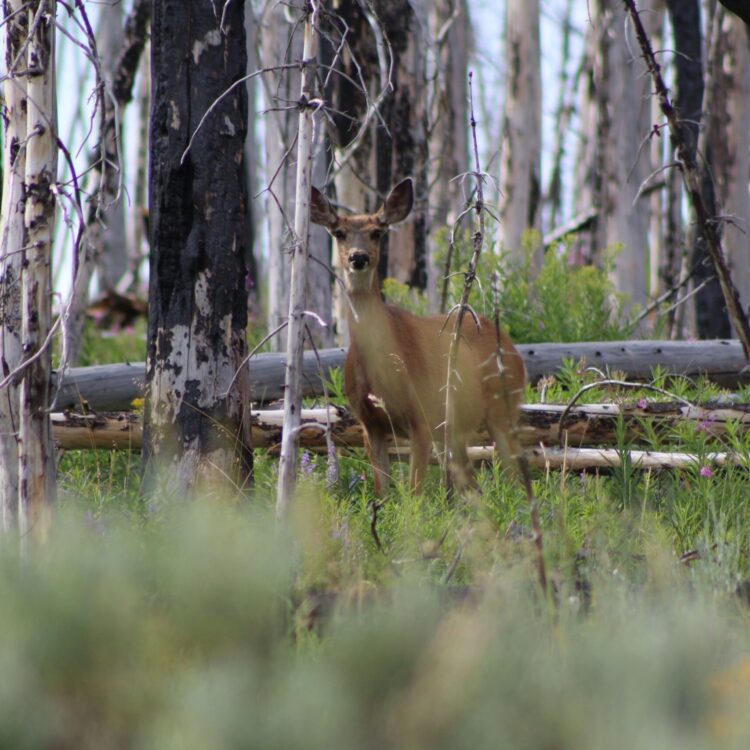
Since 2013, we have been taking a long-term, longitudinal look at the factors influencing the Wyoming Range mule deer herd. With a framework centered around nutritional ecology, we evaluate how resources such as food and space affect individuals and, more broadly, populations. We study adult females, their offspring, and adult males over years and throughout their lives. This helps us paint a holistic picture of the factors affecting this and other mule deer herds.
Main Questions
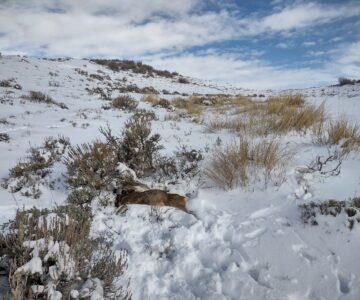
How do mule deer recover from harsh winters?
Winters in the Wyoming Range can be extremely harsh, which can cause dramatic dips in over-winter survival. Climate change has resulted in increasingly variable weather around the world with extreme conditions occurring more frequently; animals must find a way to survive that change. Understanding how animals respond to changing environments and how they cope with increasingly severe weather conditions has important implications for how and whether this herd persists into the future.
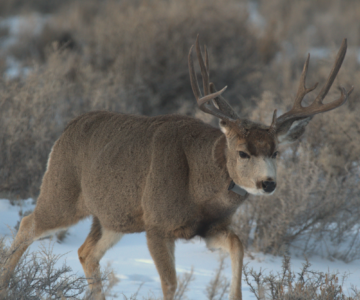
How does the ecology of male and female mule deer differ?
The production of high-quality males is often a primary goal of management agencies, and is valued among hunters and the public. Surprisingly, we know relatively little about the ecology of males, including their migratory behaviors, dispersal, and vulnerability to harvest. We are exploring the ecology of male mule deer to yield greater understanding of their presence and management.
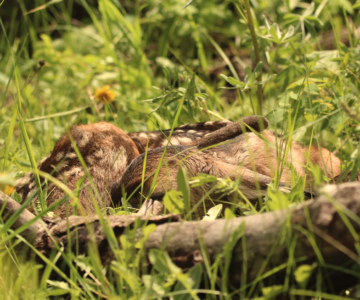
What affects fawn survival?
Getting fawns to adulthood is necessary for maintaining and growing mule deer populations. Since we started studying fawns in 2015, we have collared nearly 500 fawns and have been continually monitoring their survival. Fawn survival varies from year to year, and the primary factors causing mortalities also changes from year to year. Disease, predation, and stillbirths have all been the primary cause of fawn mortality in different years of the study.

Communications
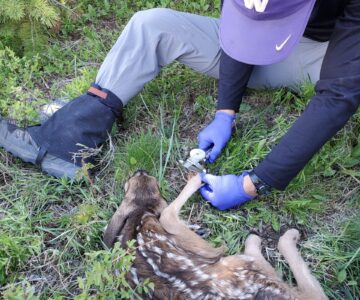
Scientific Papers
“Maternal effects and the legacy of extreme environmental events for wild mammals” by Tayler N LaSharr, Rhiannon P Jakopak, Samantha PH Dwinnell, Rebekah T Rafferty, Mark Thonhoff, Rusty C Kaiser, Gary L Fralick, Kevin L Monteith. Published 2022 in Ecology.
“Migration distance and maternal resource allocation determine timing of birth in a large herbivore” by Ellen O Aikens, Samantha PH Dwinnell, Tayler N LaSharr, Rhiannon P Jakopak, Gary L Fralick, Jill Randall, Rusty Kaiser, Mark Thonhoff, Matthew J Kauffman, Kevin L Monteith. Published 2021 in Ecology.
To see the other scientific papers that have come from this research, visit our list of peer-reviewed publications.
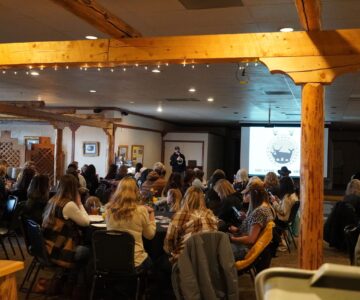
Outreach & engagement
We frequently attend sportsmen’s banquets and gatherings, such as Mule Deer Days, to share our findings about mule deer.
Project leads
Rebekah Rafferty
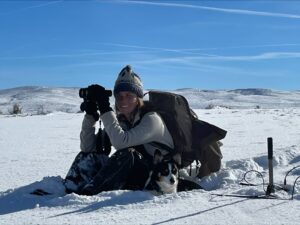
Tayler LaSharr
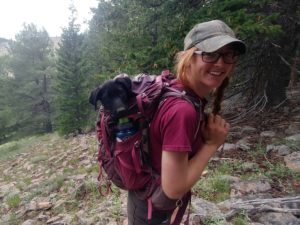
Collaborators, partners, and funders
The Wyoming Range Mule Deer Project is supported by Wyoming Game and Fish Department, Wyoming Game and Fish Commission, Bureau of Land Management, Muley Fanatic Foundation (including Southwest, Kemmerer, Upper Green, and Blue Ridge Chapters), Boone and Crockett Club, Wyoming Wildlife and Natural Resources Trust, Knobloch Family Foundation, Wyoming Animal Damage Management Board, Wyoming Governor’s Big Game License Coalition, Bowhunters of Wyoming, Wyoming Outfitters and Guides Association, Pope and Young Club, U.S. Forest Service, and U.S. Fish and Wildlife Service. We thank the multiple landowners that kindly offered access on their property for this research.
